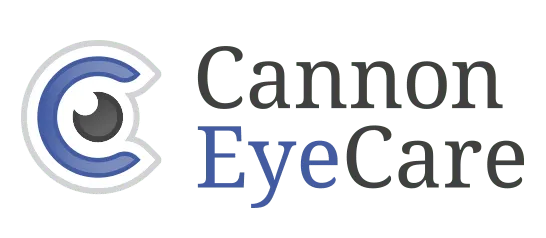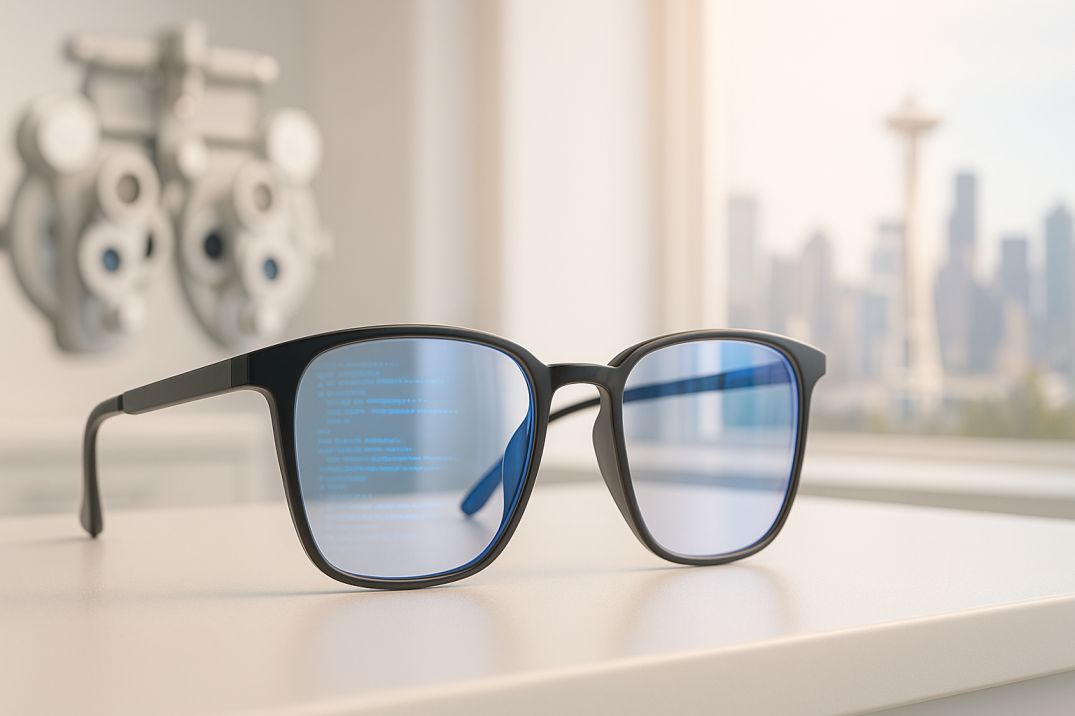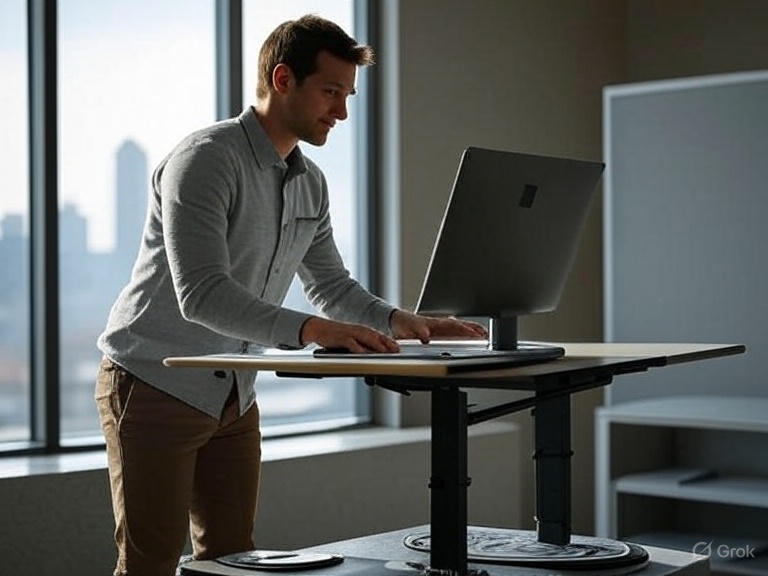How to Choose the Best Corrective Lenses for You
Key Takeaways: Your Seattle-Focused Vision Guide
-
Choose Lenses That Fit Your Life: Match lens types to your lifestyle—progressives for seamless transitions, torics for astigmatism, and high-index options for sleek, stylish eyewear without bulk.
-
Decode Your Prescription Like a Pro: Understanding SPH, CYL, Axis, and Add Power helps you select lenses that truly enhance your daily vision—essential for navigating everything from foggy ferry rides to screen-heavy workdays.
-
Match Materials to Seattle Living: From impact-resistant polycarbonate for active adventurers to high-index plastic for urban professionals, the right lens material boosts both comfort and durability in Seattle’s diverse environments.
-
Coatings Matter More Than You Think: Anti-reflective, scratch-resistant, and blue light filtering coatings aren’t extras—they’re essentials for rainy roads, screen time, and sudden sunbursts.
-
Glasses vs. Contacts? It’s About Your Routine: Glasses offer low-maintenance versatility for unpredictable Seattle weather, while contacts provide an active, unobstructed experience ideal for outdoor enthusiasts.
What’s a Corrective Lense and How Does it Work
Corrective lenses fix vision issues like refractive errors, helping your eyes focus light precisely onto the retina for sharp sight.
Find Your Perfect Fit: Corrective Lens Types for Seattle WA Vision Needs
Choosing the right corrective lenses in Seattle WA isn’t one-size-fits-all. Different lens types solve specific vision challenges and match varied lifestyles across our city – from downtown commuters to outdoor enthusiasts. Understanding these options ensures your Seattle eyeglasses or contacts deliver optimal clarity for your daily life.
Here’s a comparison of common corrective lenses available at Seattle vision centers:
-
Single Vision Lenses:
-
Corrects: One vision field (distance, intermediate, or near)
-
Best For: Nearsightedness (myopia), farsightedness (hyperopia), or astigmatism. Simple, effective correction for Seattle drivers, students, and workers with single-focus needs.
-
Seattle Benefit: Affordable, widely available solution for clear vision at your primary focal point.
-
-
Bifocal Lenses:
-
Corrects: Two zones (distance top, reading/near bottom) with a visible line.
-
Best For: Presbyopia (age-related near-vision loss) requiring both distance and reading correction.
-
Seattle Benefit: Helps Seattle WA residents easily switch focus between road signs and menus at local favorites like Pike Place Market.
-
-
Trifocal Lenses:
-
Corrects: Three zones – distance, intermediate (computer screens), and near – with visible lines.
-
Best For: Advanced presbyopia needing clear vision at arm’s length (e.g., dashboards, office tasks).
-
Seattle Benefit: Ideal for Seattle tech workers or drivers navigating complex commutes needing intermediate clarity.
-
-
Progressive Lenses (No-Line Bifocals):
-
Corrects: Smooth transition between distance, intermediate, and near vision – no visible lines.
-
Best For: Multifocal needs with a preference for seamless aesthetics and modern optics.
-
Seattle Benefit: Popular choice for active Seattleites wanting stylish, versatile lenses for hiking trails to boardroom presentations.
-
-
Toric Lenses (Astigmatism Correction):
-
Corrects: Uneven corneal curvature causing blurred/distorted vision at all distances.
-
Best For: Astigmatism sufferers (available in glasses & contacts).
-
Seattle Benefit: Provides crisp, stable vision crucial for navigating Seattle’s rainy streets or detailed craftwork. Essential for sharper sight in challenging conditions.
-
Decoding Your Prescription: A Seattle WA Guide to Lens Specifications
Understanding your corrective lens prescription is crucial for achieving sharp, comfortable vision tailored to Seattle’s unique environments – from reading ferry schedules to navigating rain-slicked streets. This document holds the blueprint for your perfect lenses. Let’s break down what those numbers and terms mean for your Seattle eyewear.
Essential Prescription Terms Explained:
-
Sphere (SPH):
Indicates lens power for nearsightedness (-) or farsightedness (+). This is your primary vision correction strength – critical for Seattle drivers needing clear distance vision.
-
Cylinder (CYL) & Axis:
Work together to correct astigmatism (common in Seattle WA patients).
-
-
CYL: Measures how much correction is needed
-
Axis (0-180°): Pinpoints where on the cornea the correction applies
*Example: A “CYL -1.25 Axis 090” prescription corrects specific corneal irregularities.*
-
-
Add Power:
Extra magnification for near vision (e.g., reading menus at Pike Place Market). Essential for presbyopia patients in multifocal lenses.
-
Prism:
Corrects eye alignment issues (less common). Requires specialized fitting at your Seattle eye clinic.
Glasses vs. Contacts: Key Prescription Differences
-
Contact Lens Prescriptions Include:
-
Base Curve: Matches your eye’s curvature for comfort
-
Diameter: Ensures proper lens coverage and fit
These measurements are unique to contacts and require professional assessment.
-
-
Why They Differ:
Glasses sit ~12mm from your eyes, while contacts rest directly on them. This affects optical calculations – never interchange prescriptions without consulting your Seattle optometrist.
Selecting Lens Materials: Your Seattle WA Guide to Comfort & Clarity
Choosing the right lens material transforms your vision experience in Seattle WA – impacting comfort during long commutes, durability against our rainy climate, and visual clarity from Pike Place Market to Mount Rainier vistas. The optimal material balances your prescription needs with Seattle’s unique lifestyle demands.
Top Lens Materials at Seattle Optical Shops:
-
Plastic (CR-39):
-
Best For: Budget-conscious Seattleites with mild prescriptions
-
Pros: Lightweight, affordable, good clarity
-
Seattle Note: Excellent for indoor work but less protective for outdoor activities
-
-
Polycarbonate:
-
Best For: Seattle children, athletes, and safety-focused professions
-
Pros: Impact-resistant (10x stronger than plastic), UV protection built-in, thinner profile
-
Seattle Benefit: Essential protection for hiking, cycling, and waterfront activities
-
-
High-Index Plastic (1.67/1.74):
-
Best For: Strong prescriptions seeking thinner, lighter lenses
-
Pros: Reduces “coke-bottle” effect, minimizes distortion
-
Seattle Advantage: Maintains stylish appearance in professional settings downtown
-
-
Glass (Mineral):
-
Best For: Low-prescription wearers prioritizing scratch resistance
-
Pros: Superior optics, scratch-resistant
-
Seattle Consideration: Heavy weight and breakage risk make it less ideal for active lifestyles
-
Must-Have Lens Coatings for Seattle Lifestyles:
-
UV Protection:
– Blocks 100% UVA/UVB rays – critical even on Seattle’s cloudy days
– Local Tip: Built into polycarbonate and Trivex materials
– Reduces digital eye strain from screens
– Seattle Essential: Protects tech workers and students during long screen sessions
-
Scratch-Resistant Coating:
– Extends lens life against daily wear
– Seattle Value: Worthwhile investment for glasses exposed to outdoor elements
– Minimizes glare from headlights and wet streets
– Safety Plus: Improves night driving visibility on Seattle’s rainy roads
Eyeglasses vs. Contacts: Finding Your Ideal Seattle WA Vision Solution
Choosing between eyeglasses and contact lenses impacts how you experience everything in Seattle WA – from navigating rainy commutes to hiking Mount Rainier. Both correct vision effectively, but your Seattle lifestyle, eye health, and personal preferences will determine the best fit. Here’s how they compare for local residents:
Eyeglasses: Reliable & Versatile for Seattle Living
-
Easy Maintenance: Pop on/off instantly during Seattle’s weather shifts (rain to sunshine)
-
Lower Infection Risk: Ideal for allergy-prone eyes during pollen season
-
Advanced Features: Accommodate all lens types (progressives, transitions) and coatings (anti-glare for night driving)
-
Seattle-Ready: Perfect for coffee shop workdays or sudden mountain adventures
-
Consideration: Require adjustments at your Seattle optical shop if frames loosen
Contact Lenses: Active & Unobstructed Vision
-
Natural Field of View: No frame obstruction – great for Seattle sports (kayaking, climbing)
-
Active Lifestyle Optimized: Won’t fog or slip during workouts or waterfront jogs
-
Specialized Options: Available as dailies (convenient for travel), toric (astigmatism), and multifocal
-
Seattle Style: Invisible solution for dates at Pike Place Market or professional events
-
Consideration: Require strict hygiene – carry solution during Seattle day trips
Key Decision Factors for Seattleites:
-
Comfort & Convenience:
Glasses offer “set-and-forget” ease; contacts need daily insertion but provide freedom -
Eye Health:
Contacts may irritate dry eyes (common in Seattle’s windy winters) – consult your optometrist -
Cost Analysis:
Glasses: Higher upfront, lower long-term | Contacts: Ongoing supply costs -
Aesthetic Preference:
Make fashion statements with frames vs. natural appearance with contacts
FAQs
-
What are corrective lenses and how do they work?
Corrective lenses adjust how light enters your eye, focusing it precisely on the retina to improve blurry vision caused by refractive errors like myopia or hyperopia.
-
How do I know which type of corrective lens is right for me?
-
Can I wear contact lenses if I have astigmatism?
-
How often should I replace my corrective lenses?
-
Are progressive lenses better than bifocals?
-
How do I properly care for my contact lenses?
-
Can children safely wear corrective contact lenses?
-
What are the main types of corrective lenses?
-
Why do I need a special prescription for contact lenses?
-
Can contact lenses cause eye infections?
-
How long does it take to get used to new corrective lenses?
-
Are there corrective lenses that block blue light?




